Matador Network's Blog, page 628
July 14, 2021
10 New Orleans Airbnbs near the French Quarter for bachelorette parties and reunions

We hope you love the spaces and stays we recommend! Just so you know, Matador may collect a small commission from the links on this page if you decide to book a stay. Listed prices are accurate as of the time of publication.
Most visitors to New Orleans want to stay in the downtown and French Quarter areas and the surrounding neighborhoods. Fortunately, these parts of the city are loaded with great Airbnbs, within walking distance of the action on Bourbon Street. Here are the 10 best New Orleans Airbnbs to put you close to all the fun the city has to offer.
1. Renovated Mid-City apartment walking distance to jazz clubs
Photo: Airbnb
This newly renovated Mid-City apartment is located on the second floor with a private entrance. It’s flooded with tons of natural light, and it comes complete with a full kitchen, so in case you choose not to indulge in New Orleans cuisine, you can cook for yourself. It’s ideal for a tight-knit group of a few close friends.
Four guests, two bedrooms
Price: $120 per night

Photo: Airbnb
This remodeled home is large and perfect for bachelorette parties and other group getaways to New Orleans. Staying in a historic property in a historic city adds to the charm, and you’ll be just northeast of the French Quarter — a beautiful three-block walk. Dining, cafes, and still-operating bakeries are also within walking distance.
Eight guests, four bedrooms
Price: $598 per night

Photo: Airbnb
No place is more epic for a New Orleans bachelor or bachelorette party, or a large reunion of any kind, than a mansion. The Robertson Mansion is 10 short blocks from Bourbon Street and the perfect place to chill before and after visiting the French Quarter. It’s strikingly NOLA with a wraparound porch, a large kitchen that has undoubtedly played host to some fantastic meals over the years, and walking distance to everything.
FIfteen guests, seven bedrooms
Price: $874 per night

Photo: Airbnb
Enjoy your stay in a traditional New Orleans shotgun-style home in the Marigny right outside the French Quarter. The artfully designed space with its art and bright colors is an instant mood booster. It was honored at the AIA New Orleans Design Awards for its mix of old and new construction. It also includes a saltwater pool and deck garden. The pool is heated, so it can be used all year round.
Three guests, one bedroom
Price: $135 per night

Photo: Airbnb
Make this French Quarter Airbnb your home away from home in New Orleans. It’s only a few hundred feet from Bourbon Street and within walking distance to anywhere in the French Quarter. You can get a view of downtown, and you are a quick walk to the St. Louis Cathedral, all while still enjoying privacy and seclusion. The space also includes a large balcony overlooking the Quarter.
Four guests, two bedrooms
Price $327 per night

Photo: Airbnb
The best New Orleans Airbnbs incorporate water, a historic property, and walkability to deliver a great experience. Located in the Irish Channel neighborhood, this two-story home is excellent for a group trip. It has four bedrooms, three full baths, and an outdoor patio area. It was built in 1900 but has modern amenities, including smart TV, cable, and Wi-Fi. Beer lovers will appreciate its proximity to “Brewer’s Alley” — the nearby breweries and distilleries including Urban South, Port Orleans, NOLA Distillery, and more.
Eight guests, four bedrooms
Price: $639 per night

Photo: Airbnb
Stay right in the center of New Orleans at this downtown condo. Whether you’re a solo traveler or working from home, this one-bedroom is perfectly convenient. It’s ideal if you’re in town for a special event because it’s located within walking distance of the Superdome, Smoothie King Center, and Harrah’s Casino.
Two guests, one bedroom
Price: $79 per night

Photo: Airbnb
Many travel to New Orleans Airbnbs for bohemian endeavors. No spot is more conducive to this than this large, spacious apartment just two blocks off Bourbon Street and right near Canal Street. Enjoy the hammock swing and be prepared for a bright and dazzling interior — nearly as lively as the action of the French Quarter itself.
Twelve guests, two bedrooms
Price: $284 per night

Photo: Airbnb
This beautiful Victorian-era first-floor flat features original wood floors, high ceilings, and large windows. It’s located in a very walkable area just steps away from MoJo Coffee and less than a mile from the Warehouse District. It can sleep four guests between the queen size bedroom and the Memory Foam sleeper sofa.
Four guests, one bedroom
Price: $129 per night

Photo: Airbnb
This new renovation located in the heart of Marigny recently won the Louisiana Landmarks Society Award for Excellence in Historic Preservation. The two-bedroom features a large balcony overlooking Washington Square Park. The ideal location is just a four-block scenic walk to the French Quarter. 
Four guests, two bedrooms
Price: $307 per night
The post 10 New Orleans Airbnbs near the French Quarter for bachelorette parties and reunions appeared first on Matador Network.
Pornhub’s new collection celebrates ‘Classic Nudes’ in museums around the world

Nude art long predates the era of sexting. From Ancient Greece’s au naturel marblework to India’s Kamasutra-carved temples, the naked human form has been the subject of countless artistic creations since the birth of civilization — a fact Pornhub is ready to celebrate.
The adult entertainment platform recently launched an interactive online guide to the raciest artworks showcased in museums around the world. To view the collection, art and erotica enthusiasts can visit the Classic Nudes website and virtually tour six major museums — Florence’s Uffizi Gallery, Madrid’s Museo del Prado, Paris’s Louvre and Musée d’Orsay, London’s National Gallery, and New York City’s MET — through the lens of each museum’s most Pornhub-worthy portraits, paintings, and sculptures. The site also spotlights a digital collection called “Another Perspective” that’s dedicated entirely to non-Western nude and erotic art.
By pornography standards, many of the “Classic Nudes” featured on the site could be considered softcore, such as Botticelli’s “Birth of Venus,” which depicts a coy, mostly covered Venus de Milo. Others are unabashedly x-rated, such as French realist Gustave Courbet’s full-front painting of a vagina, aptly titled “The Origin of the World.” According to the Musée d’Orsay, where Courbet’s close-up is on full display, “the painting escapes pornographic status” owing to the artist’s “great virtuosity and the refinement of his amber colour scheme.” Pornhub disagrees. Inherent to the “Classic Nudes” project is the idea that art can be sexy, respected, and educational all at once — because, as the website explains, “porn may not be considered art, but some art can definitely be considered porn.”
Whether or not you’re an out-and-proud Pornhub user already, this is one Pornhub collection even your parents would be proud to catch you perusing late at night. So pop open your browser, turn down the lights, and prepare for the sexiest art history lesson yet.
The post Pornhub’s new collection celebrates ‘Classic Nudes’ in museums around the world appeared first on Matador Network.
Kraft mac and cheese ice cream isn’t strange. It’s just like this popular Filipino dessert.

On July 13, Brooklyn-based artisanal ice cream spot Van Leeuwen Ice Cream announced that it teamed up with iconic American cheese brand Kraft to create a mac and cheese ice cream flavor. Van Leeuwen explained that the savory ice cream treat is supposed to evoke “comforting, nostalgic,” feelings, but Twitter — not exactly known for its sense of moderation — immediately flew into a tizzy.
Most users were simply confused, asking their followers if they would dare try such a seemingly unintuitive dessert flavor. The synthetic, almost-neon orange color of the ice cream (which is presumably meant to mimic the color of cheese-flavored powder) might have sent off some alarm bells. But there’s a simple fact that you can’t get from looking at the color: cheese ice cream is good. In a taste test, Eater wrote that the Van Leeuwen ice cream has a rich “buttery flavor,” is a “little funky,” but “compelling.”
“You’re going to be confused while eating it, but definitely won’t want to stop,” the review concludes.
Most people also missed that there is already precedent for cheese-flavored ice cream: queso, also sometimes spelled keso, ice cream is as common in the Philippines as chocolate ice cream is in the United States.
In the Philippines, ice cream sold from street vendors is sometimes known as sorbetes — colloquially nicknamed “dirty ice cream” (perhaps a pejorative reference to the fact that it’s sold on polluted sidewalks). The most popular sorbetes flavors include mango, ube, buco (coconut), jackfruit, avocado, and, you guessed it, cheese.
Cheese sorbetes is such a beloved treat in the Philippines that ice cream companies have adapted it for the freezer aisle: Magnolia, a brand that specializes in Southeast Asian ice cream flavors like halo-halo and lychee, once released a “queso queso” flavor, as Vice’s food and culture writer Bettina Makalintal wrote on Twitter. Another user pointed out that Magnolia also released a version of its queso ice cream with mais (corn) that’s flecked with chunks of cheese, as did the brand Selecta.

Photo: Michael D Edwards/Shutterstock
In her Vice article on cheese-flavored ice cream, Makalintal wrote that, “Filipinos have long known the truth: Processed cheese is good, and in ice cream, it’s even better,” and points out that “the concept isn’t far off from cheesecake.”
Ricotta ice cream is unquestionably common and no one questions its appeal. Salt and Straw, which produces similarly artisanal flavors as Van Leeuwen, also sells a blue cheese and pear flavor.
This time, the backlash to a quirky food flavor is totally unwarranted. As usual, there’s a cultural context that’s missing from the outrage over unfamiliar foods on social media. Once you add that necessary detail, what seems like a strange flavored food becomes a much more palatable homage (intentional or not) to a dish that already exists outside of the West.
The post Kraft mac and cheese ice cream isn’t strange. It’s just like this popular Filipino dessert. appeared first on Matador Network.
12 very zen Joshua Tree Airbnbs perfect for families and groups
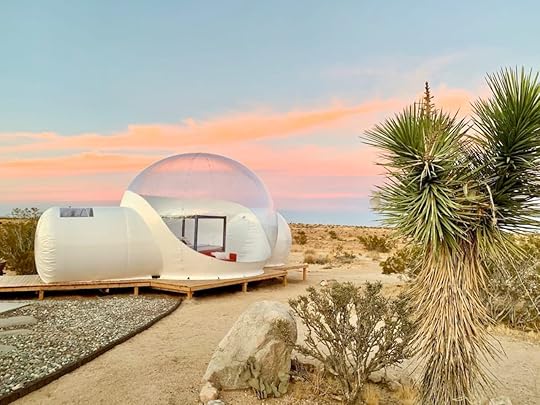
We hope you love the spaces and stays we recommend! Just so you know, Matador may collect a small commission from the links on this page if you decide to book a stay. Listed prices are accurate at the time of publication.
From charming casitas with cowboy tubs and stylish Airstreams to a now Instagram-famous flying saucer, Joshua Tree is home to an eclectic assortment of Airbnbs. Whether you’re a family or friend group looking to plan a weekend getaway or simply looking for an extended stay to work remotely, here are 12 Airbnbs at a range of price points around Joshua Tree, along with neighboring Pioneertown and Yucca Valley.
1. Joshua Tree House 10 minutes from west entrance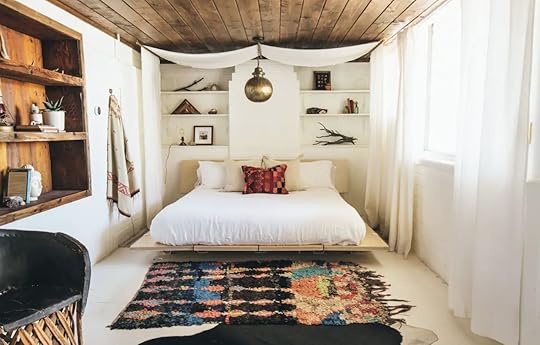
Photo: Airbnb
Despite the proximity to the west entrance of the national park and downtown Joshua Tree, there’s a real off-track feel at this re-imagined 1940s hacienda. With over 100 Joshua trees on the property and magical views, it’s one of the most popular Airbnb’s in the desert, filled with thoughtful touches like hanging chairs and a hot tub. Perfect for small gatherings, the bohemian oasis sleeps four, although an extra mattress can be set up to accommodate six.
Four guests, two bedrooms
Price: $300 per night
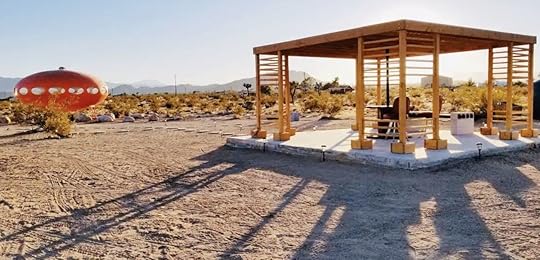
Photo: Airbnb
For sci-fi fans and small families looking for an out-of-this-world glamping experience, this flying saucer should tick the box nicely. Originally designed by Finnish architect Matti Suurone in 1968 as a portable ski cabin, the flying saucer has been refinished with cool mid-century decor, including retro egg chairs. Soak in the sunset desert views and star-filled night skies from the outdoor kitchen and deck.
Four guests, one spaceship
Price: $288 per night
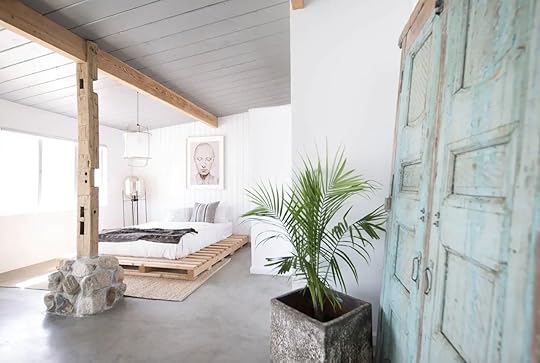
Photo: Airbnb
Tastefully styled with decor from Asia and Africa, this lovely home in Joshua Tree Village is a design lover’s dream. Just minutes from the national park entrance and a quick half-mile drive into town, it’s spacious yet cozy and can sleep up to six. There’s a fully equipped kitchen, plus a dining room with seating for eight. Outside, there’s a hot tub, deck with picnic table seating, and all-important gas barbecue.
Six guests, three bedrooms
Price: $364 per night
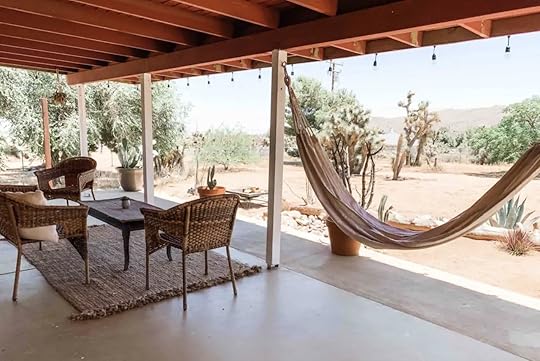
Photo: Airbnb
For a stylish stay at an approachable price point, the centrally located ranch-style home in Yucca Valley is within easy distance of Pioneertown, hot spots like La Copine, and the park entrance to Joshua Tree. The wood-burning stove and living room fireplace make things cozy during cooler months while the homemade banana bread and local coffee left out for each newly arriving guest is a thoughtful perk.
Six guests, two bedrooms
Price: $180 per night
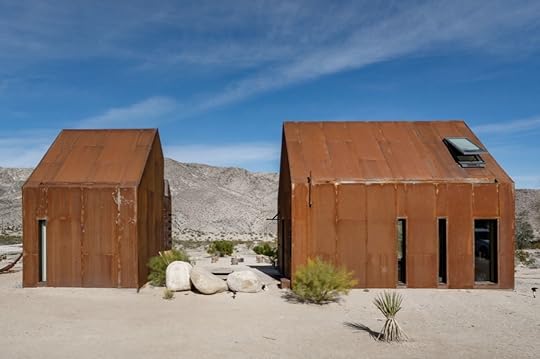
Photo: Airbnb
Although best suited for two, this completely solar-powered, architect-designed stunner in Twentynine Palms can sleep up to six people. Minimalist in design, the rusted 1950s-era barn duo comprises a living and dining room, a small kitchen, plus two lofted bedrooms with one directly open to the sky. Get cozy around the fire pit after a soak in the outdoor tub to perfectly round off a day spent exploring the desert.
Six guests, two bedrooms
Price: $575 per night

Photo: Airbnb
With three bedrooms, including a luxe master suite, plus a sizable outside space featuring a jacuzzi hot tub big enough for six, hammock lounge area, and bocce ball court, this bright and cheery house is perfect for larger groups. Conveniently located less than a mile from the park entrance, it’s also within walking distance of the Joshua Tree Saloon should anyone feel like heading out for dinner and live music.
Eight guests, three bedrooms
Price: $184 per night

Photo: Airbnb
There’s plenty of room to run around inside and out at this mod-like bungalow, making it perfect for travelers with children of all ages. You’ll be within walking distance of everything in downtown Joshua Tree, but when you’re not out and about exploring, the kid’s playset, ping pong table, and hammocks for stargazing will keep everyone entertained. Dogs are welcome, too, and there’s a family-sized kitchen for making home-cooked meals together.
Six guests, three bedrooms
Price: $278 per night

Photo: Airbnb
Another uniquely “out there” Airbnb experience, this stargazing bubble-tent and house combo is (so far) the only one of its kind in the area. Guests can opt to sleep under the stars in the small but mighty bubble or adjacent ranch house, which features a spacious living room, fully equipped kitchen, and queen-sized bed. There’s an outdoor shower and LED light garden, and for a $50 fee, pets are welcome too.
Five guests, two bedrooms
Price: $606 per night
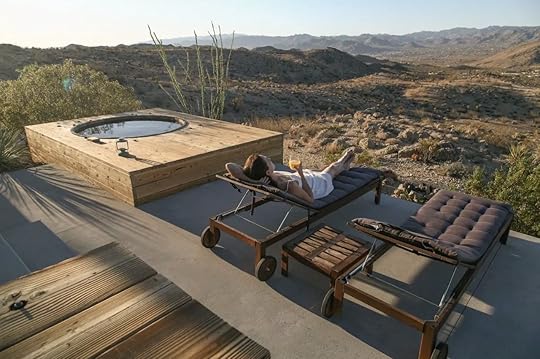
Photo: Airbnb
Featured in glossies like Vogue and Architectural Digest, the San Jacinto mountain views are nothing short of spectacular from this vacation retreat in Yucca Valley. Bring the dog and hike Bartlet Mountain or kick back at the house with an afternoon soak in the tub and an evening spent cozying up around the chiminea. With two bedrooms and a pull-out sofa bed in the living room, this abode can sleep six comfortably.
Six guests, two bedrooms
Price: $234 per night
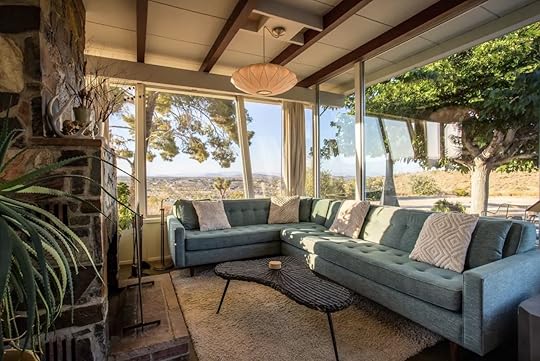
Photo: Airbnb
With its vintage decor and understated interior styling, there’s a real home-away-from-home feel at this haute desert retreat in Yucca Valley. Perched on a hill between Pioneertown and Joshua Tree, the mid-century compound enjoys lovely 360-degree views and can sleep up to six. The swimming pool, hot tub, cozy fire pit, and complimentary bottle of red wine for newly arriving guests are all nice extra touches.
Six guests, two bedrooms
Price: $564 per night

Photo: Airbnb
Whether in town to remote work or explore the national park, close friends and couples will love this colorful gem in Yucca Valley’s Flamingo Heights. The eye-catching chef’s kitchen features a Smeg refrigerator while the living room boasts a mid-century-style fireplace. Outside, cool off while catching some rays in the cowboy-style pool or look for shooting stars while soaking in the hot tub at night.
Four guests, two bedrooms
Price: $276 per night
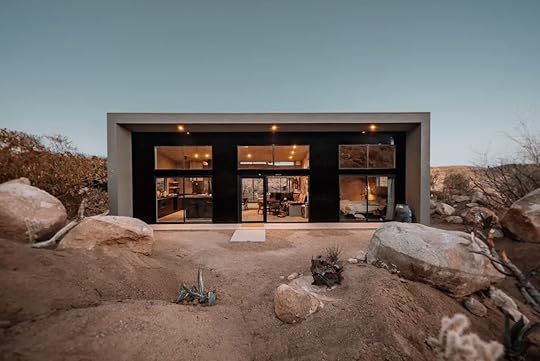
Photo: Airbnb
A two-minute walk from Pappy & Harriet’s, this stunning new addition to Pioneertown’s Airbnb lineup features unexpected details like an outdoor shower crafted from a shark diving cage said to have been damaged from an actual attack. There are two bedrooms in the main house while a standalone casita is home to a third. Guests can also arrange guided yoga, meditation sessions, sound baths, and star tours with the owner. 
Seven guests, three bedrooms
Price: $3,105 per night
The post 12 very zen Joshua Tree Airbnbs perfect for families and groups appeared first on Matador Network.
Across the US, these LGBTQ organizations are making the outdoors more accessible
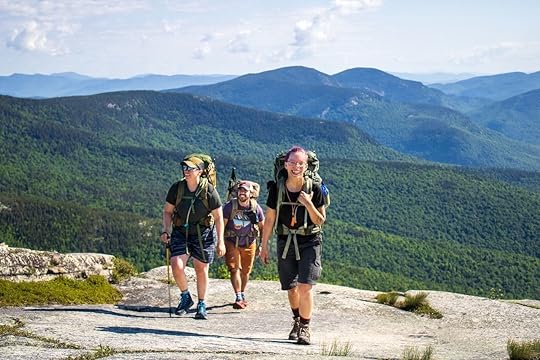
While traveling is an exciting and liberating experience, for those of us in the LGBTQ community, it can also come with risks. Between navigating TSA scans, using public restrooms, and understanding our rights under differing state legislatures, it can be really daunting to venture off the beaten track. This is why looking into group travel and using the support of organizations is a really great way to plan a trip, especially if you’re considering an outdoor excursion.
There are many LGBTQ outdoor organizations that run a huge range of activities throughout the US promising a safe environment and community for all. These range from camps, specialized programs catering to youth, to educational and conservation trips. You may have heard about the excellent work being done by the likes of The Venture Out Project and the social media initiative Diversify Outdoors, but we wanted to shine a light on a few others who not only make the outdoors accessible to the LGBTQ community but also create a welcoming and inclusive environment.
1. Wild Diversity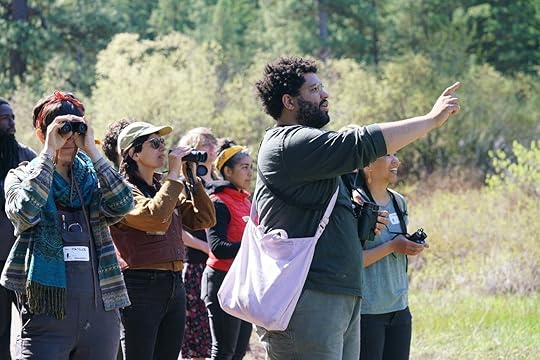
Photo: Wild Diversity/Facebook
Wild Diversity was founded in 2017 by Mercy M’fon Shammahk to support a community of POC and LGBTQ+ outdoorists. Based out of Portland, Oregon, Wild Diversity provides experiences for those from underrepresented communities to enjoy being in nature. Through its various excursions, educational programs, and community workshops, the organization strives to foster a sense of community, provide resources and decolonize outdoor spaces.
Most of the available excursions explore the state of Oregon, but there’s a varied catalog of activities to choose from. It’s worth keeping an eye out for their leadership and development training and their conservation programs. The BIPOC Swimming event is currently running which is part of the larger BIPOC event series. The wild swimming goes beyond jumping in and getting wet, it invites attendees to explore their relationship with the water. Check out their events page for more information regarding the summer schedule.
2. OutVenturesFounder Ed Ferguson created OutVentures in 1994 after moving to Seattle. Wanting to explore more of his surrounding area, he began leading an informal Sunday morning hiking club for young men. OutVentures now caters to a larger spectrum of people in the LGBTQ community and hosts a variety of events for members to enjoy. Between day hikes, camping, backpacking, white water rafting, and potlucks, OutVentures is up for just about anything in the outdoor realm.
In order to become a member, you must be 18 years or older. However, minors can participate if accompanied by a member guardian. Community is at the cornerstone of this organization. Being volunteer-driven, all members come together to cultivate a safe space and plan and coordinate all activities. For more information and event dates visit their website.
3. The Venture Out Project
Photo: The Venture Out Project/Facebook
In 2014, Perry Cohen founded The Venture Out Project as a way to combine his professional life with his other passions: his love for the outdoors, his dedication to social justice, and his own trans and queer identities. Having worked for other outdoor organizations and camps prior to this, Cohen harnessed his experience to establish the organization which now provides a huge range of excursions for queer folx.
The TVOP headquarters are based in Western Massachusetts, but they host trips and events all across the US. We reached out to the organization to see what upcoming events they have on the books, and the list is long. This summer they are running events for all ages. In mid-August, TVOP will be co-sponsoring an LGBTQ+ river rafting trip in Colorado with Holiday River Expeditions. At the end of August, they are leading a trip to Yellowstone National Park to support trail rehabilitation. And throughout summer, they are leading hikes close to their headquarters every Thursday night. There is a waiting list for many of the upcoming events, but we recommend getting in touch and expressing your interest regardless.
TVOP is one of the most well-established LGBTQ outdoor organizations in the US and really do cater to all, welcoming anyone between the ages of 18 to 65. Also, if you think you’d like to give one of their many trips a go but don’t have anyone to sign up with, don’t worry, they express that you’ll make friends and a community in no time.
4. One Heartland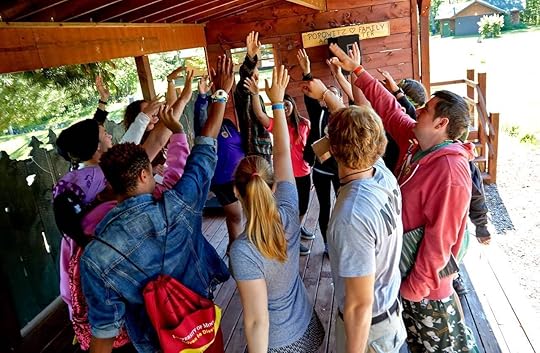
Photo: One Heartland/Facebook
One Heartland creates camp experiences for youth dealing with isolation, intolerance, and/or serious health challenges. Located in Willow River, Minnesota, they cater to youth from all over the US. One Heartland calculates the cost of camp based on income and need, making their programs accessible to a wide range of folx and to those who could benefit the most.
We reached out to One Heartland to get more information on Camp True Colors, their program for LGBTQ+ youth. This is one of the largest LGBTQ+ camps in the US. Originally advertised as an educational leadership program, the camp changed direction and now provides a summer camp experience just like any other. They have established a safe space where campers can enjoy the outdoors and be their authentic selves, free from bullying and judgment. One Heartland also runs camps for youth experiencing housing instability and those living with or affected by HIV/AIDS. For more information on any of their programs, visit their website.
5. OUT There AdventuresOUT There Adventures has one simple goal: to empower young queer people through their connections to nature. Founder Elyse Rylander is an activist who works tirelessly to break down the barriers to outdoor spaces for the LGBTQ community. Since 2006, OTA has taken thousands of LGBTQ youth and adults on outdoor excursions all over North America and invites attendees to think critically about the equity, access, and privilege that is often needed to easily enjoy nature.
This year they launched their Get OUT There Virtual Challenge, which you are welcome to participate in from your home state. Once a month they bring together queer folx to complete an outdoor challenge and share the experience with the online group. It costs nothing to join and is a very supportive community. If you want to know more or get involved with OTA’s programs, in-person or virtually, all the information is listed on their website.
6. Queer Nature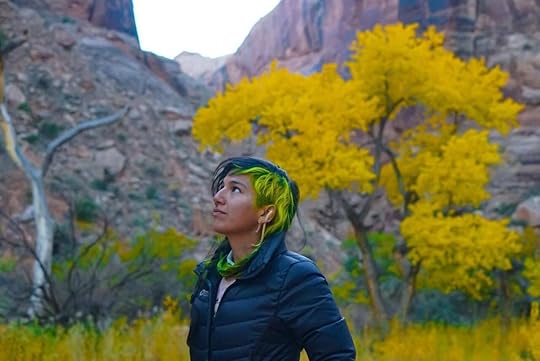
Photo: Queer Nature/Facebook
Queer Nature is a queer-run educational and ancestral skills program on a mission to connect the local LGBTQ2+ community to the land they live on. Co-creators Pinar and So lead three public programs covering topics such as survival skills and understanding the power dynamics between humans and other beings. The company is based in Washington State and is currently offering virtual content via their Patreon. If you want to stay in the loop regarding future in-person events, subscribe to their email list on their website.
7. Diversify OutdoorsDiversify Outdoors is a social platform catering to anyone from the LGBTQ+ community. From bloggers, athletes, activities, entrepreneurs, and other influencers, members come together to share their love of the outdoors without the barrier of physical location. If you’re interested in interacting with Diversify Outdoors, there are several ways you can do so: You can become one of their influencers, join the movement by using #DiversifyOutdoors on social media, or connect with them through their website.
8. Rainbow Ranch Campground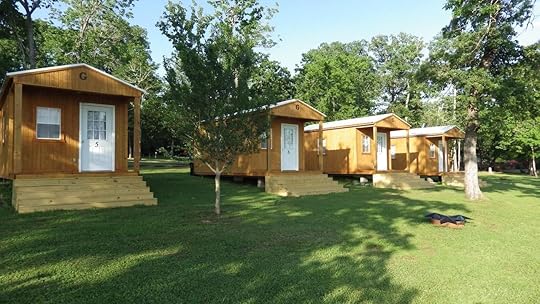
Photo: Rainbow Ranch Campground/Facebook
With an assortment of tent sites, RV sites, and one large house, Rainbow Ranch — located in Central Texas — provides a safe outdoor space for their queer campers to enjoy. In addition to their rentals, they also have several events such as Women’s Summer Splash, Men’s Round Up, and Single’s Weekend for campers to make new connections within the community. For more information on their events, policies, and campsite map, check out their website. 
The post Across the US, these LGBTQ organizations are making the outdoors more accessible appeared first on Matador Network.
‘Roadrunner’ brings Anthony Bourdain back to life, with heartbreaking results

The opening scenes of Morgan Neville’s new documentary about Anthony Bourdain’s legacy, Roadrunner, feels like a haunting. Bourdain’s voice floats onto the screen, narrating his story from the afterlife. It’s an emotionally jarring moment that will hit Bourdain’s longtime fans like a wrecking ball — just one moment among many in Roadrunner that will resurface the grief and heartache brought on by Bourdain’s passing in 2018.
“To tell a story about Tony and never have his voice just felt wrong,” Neville tells me. “He was always his own character. So he could help tell his own story.”
Neville brings together friends and colleagues of Bourdain’s, including friends Eric Ripert and David Chang, as well as his producers and directors, like Helen Choi and Tom Vitale. Clearly still wrestling with anger and grief over his death, each figure reflects on the legacy of a man who was in many ways easy for fans and outsiders to idealize and romanticize.
Rugged and charming, astonishingly smart and quick witted, it was only natural to elevate Bourdain to a pedestal. But Neville isn’t so easy to fool, and while clearly admiring of Bourdain’s accomplishments, he also allows his interview subjects and his own archival research of behind the scenes clips to show another side of the television host and writer — one that brings the legend back down to earth. In one equally moving and disturbing moment, for instance, Chang bursts into tears recalling the moment when Bourdain told him he would never be a good father.
But that ultimately is what Tony, as Neville refers to him, would have wanted. Bourdain and the people who loved him wouldn’t have felt that a fawning, idealized portrait of him would be honest or even ethical. This was, of course, a man who was open about his rocky past — who, as Neville puts it, “embraced brutal honesty,” openly explored his cocaine and heroin addictions, and whose dark sense of humor tended toward unsettling jokes about death.
“He was upfront about his flaws,” Neville says. “Almost like a badge of honor, wearing his flaws on the outside. I think that’s something incredibly endearing about him: He wasn’t bullshitting, and so people could trust him. But I also feel like for all his introspection, he had some blindspots.”
Neville recalls one of his first meetings with Chris Collins and his wife Lydia Tenaglia, who were collaborators on Bourdain’s show Cook’s Tour and who ended up working with him over the course of the rest of his career. Neville launched into what he calls a “rambling” speech with Collins and Tenaglia, in which he praised Bourdain’s work and made it clear how important it was to him — until they stopped him and offered a blunt reminder: “He could be such an asshole.”
“I think doing something hagiographic would have been totally the wrong thing,” Neville continues. “I felt like they were giving me permission [by saying] ‘Don’t sanctify him. Tony does not need it.’”
Part of understanding Bourdain was not just to create a nuanced, honest portrait of someone who was almost universally and unconditionally beloved, but to also examine where his perspective falls short. Yes, he was an exceptionally, almost uncannily perceptive and insightful person. But he also had trouble seeing and understanding himself — and his impact on others.
“He was aware of his emotional shortcomings, but he didn’t focus on those,” Neville says. “In a way, it’s a lot easier to talk about addictions and mental health, but his most fundamental shortcomings had to do with how he could feel love and receive love.”
That revelation is perhaps especially heartbreaking given how loved he actually was. The tension between Bourdain’s struggle to feel loved and how much he’s loved by his family and colleagues is very much a central pillar of the documentary.

Photo: Focus Features
The memorial that popped up for him outside of the restaurant Les Halles is just one testament to the outpouring of pure devotion people felt for him. Not just by the strangers who watched his show, but by the people closest to him. His presence fundamentally changed everyone he encountered — in-person or through a screen — and almost always for the better. One undeniable element of Bourdain’s legacy, in fact, is that everyone who knew him loved him — and still does.
Yet Roadrunner grapples with Bourdain’s distorted version of himself. Not just in the emotional and psychological sense, but also in his professional life. In one stand-out audio clip Neville unearths, Bourdain insists that it’s not his purpose to be an educator, advocate, or a journalist — and that it’s not even his intention to inspire people.
Moments later, Eric Ripert refutes this claim directly, speculating that perhaps he didn’t fully realize how fundamentally political his work was. Indeed, from an outsider’s perspective, his greatest impact arguably was how much he did inspire people in so many ways. He inspired people to travel and experience unfamiliar food, but also, and more importantly, he inspired people to be more compassionate, curious, empathetic, outspoken, and fearless. But it might have been easier for Bourdain to ignore his influence on strangers than acknowledge it.
“Tony often had a willful ignorance about himself,” Neville says. “I feel like he tried to keep everything in a bubble. If he actually had to confront the platform he had or the influence he had, that would become overwhelming. So he put blinders on just as a way of focusing on the job. I think it felt much safer and more manageable for him to make it feel smaller than it actually was.”
It might be difficult for long-time devotees of Bourdain’s work to accept his conflicted attitude toward his work (it certainly was for me), but that’s part of a tension at the heart of the documentary. He was a journalist of the highest order and made television that changed American culture for the better, and yet he seemed to struggle to justify and accept his purpose as our tour guide.
The documentary will also almost definitely bring back to the surface all the grief fans of Bourdain felt, and continue to feel, after he died. One of the greatest contradictions of Bourdain’s life is that he was a profoundly lonely person. Yet everyone who encountered him felt that we were his dearest friends. He drew us in and made us all feel like his most intimate confidantes. We were — we are — so attached to him not as a celebrity, but as a person, and many are still struggling to understand why he left us behind.

Photo: Focus Features
Roadrunner is also a cathartic, final eulogy for Bourdain. It’s not a satisfying eulogy, exactly, but a comfort nonetheless. It’s a road map to recovering from his death that I imagine people who loved him will return to again and again, seeking answers and solace in his own words and those of his friends. Neville does his best to compassionately create space for the people he interviewed to be emotionally raw. In doing so, his film reaffirms that the mourning period is not over. Maybe it never will be.
“I saw every stage of grief making this film — people being angry, sad, forgiving,” he says. “Experiencing all that grief, I had to honor it. I wanted people to feel that crater he left behind when he died.” 
The post ‘Roadrunner’ brings Anthony Bourdain back to life, with heartbreaking results appeared first on Matador Network.
July 13, 2021
Surfing, skating, and climbing may make the 2021 Summer Olympics the best yet

There’s a lot to look forward to at the Summer Olympics 2021 (still officially called Tokyo 2020), which finally begin next week. Despite the last-minute barring of spectators at events within Tokyo, five new sports could make these Summer Games among the most exciting in memory.
Even without cheering fans, the new sport of skateboarding will not only feature jaw-dropping tricks, but some of the youngest athletes at any Olympics. Sport climbing will have climbers racing up walls most of us can only look at while maneuvering their bodies upside-down 60 feet off the ground. Read on for more on these and all the new sports at the Tokyo Olympics.
1. Surfing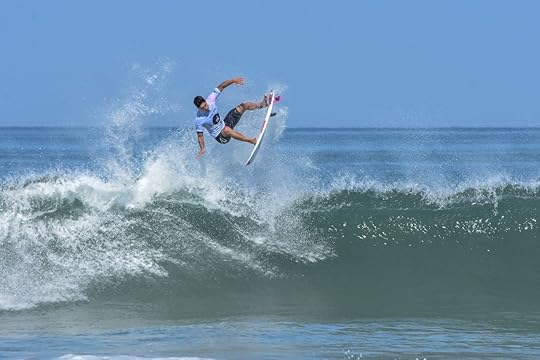
Photo: Rodrigo S Coelho/Shutterstock
Surfing’s inclusion in the Olympics is a long time coming. The first person to advocate for its inclusion was Duke Kahanamoku, an Oahu native who won multiple gold and silver medals for swimming at three Summer Olympics. More than a century after Kahanamoku introduced the Hawaiian sport of surfing to the world, surfing will be in the Olympic Games.
Twenty men and 20 women will compete at Shidashita Beach, a well-loved black-sand beach close to Tokyo. Many have wondered why the Olympic Organising Committee didn’t opt for an artificial wave, which would simulate uniform waves every time and might be easier to judge “fairly.” The reality is that surfers compete in changing waves all the time.
The biggest issue in Tokyo will be the swell that produces the waves. Organizers are hoping for big, barreling waves produced by summer cyclones and have allowed for a 16-day window to start the two-day surf competition. If no cyclones arrive, surfers will have to show their stuff on smaller, softer waves produced by fairly consistent trade winds.
Whatever waves show up, there’s hardly anyone more capable than world champions like Hawaiian Carissa Moore and Brazilian Gabriel Medina to create a massive amount of energy and speed from even the softest waves.
2. Skateboarding
Photo: Sky Brown/Facebook
Like surfing, skateboarding has been included in this Summer Olympics to draw a younger audience. Unlike surfing, though, a few of the athletes themselves will be some of the youngest participants than in any previous games.
Sky Brown, who only turned 13 last week, will be the youngest athlete to compete for Great Britain at a Summer Olympics, and her British teammate, Bombette Martin, is just 14. Both will be two of the ten competitors in the Women’s Skateboard Park competition. Ten men will compete in the Men’s Skateboard Park as well, and ten men and ten women will vie for medals in skateboarding’s other event: Skateboard Street.
The street skateboarder for the women’s event to watch is Brazil’s Leticia Bufoni. In the Men’s Skateboard Street event, the favored phenom is Nyjah Huston. While Huston is 26 today, he was the youngest X Games participant ever at 11. He’s long since traded his dreadlocks for tattoos, but what will really catch your eye are what he manages to do on a plank of wood and four wheels.
3. Sport climbing
Photo: Aleksandra Mirosław
/Facebook
Sport climbing will be another new sport at the Tokyo Olympics, debuting at Tokyo’s Aomi Urban Sports Park. Twenty men and 20 women will compete in three events: speed climbing, bouldering, and lead climbing. Unlike skateboarding, athletes don’t choose which events to participate in. Instead, they’ll have to compete in all of them, with their combined scores determining the winners, much like gymnastics.
Having climbers compete in all three disciplines was a controversial decision since many of the world’s best climbers are specialists in just one or two disciplines. Poland’s Aleksandra Miroslaw is the world’s speed champion but is less strong in the other events. Then again, she’s so ridiculously fast scrambling up the wall that she’s likely to win speed climbing, positioning her to medal overall.
Adam Ondra from the Czech Republic tops the world in lead climbing and bouldering, and he’s working to up his speed game to win gold. Speedy or not, the sight of Ondra positioning his body upside down while 60 feet off the ground is the kind of thing that makes you forget to breathe. Meanwhile, Japanese locals will set their sights on their own Miho Nonaka, an expert in all three disciplines who makes climbing look easy and captivating.
4. Karate
Photo: PROMA1/Shutterstock
The centuries-old Japanese martial art became popular in the West after World War II, as signified by such movies as The Karate Kid and its many sequels. Karate joins five other martial arts — judo, taekwondo, wrestling, boxing, and fencing, on the roster of Olympic summer sports this year.
Like all these events except fencing, karate will divide sparring participants into weight classes. The sparring event, Kumite, will include 40 men and 40 women paired off against opponents, who they’ll have three minutes to outscore by landing their punches or kicks correctly.
Unlike the other martial arts, though, karate at the Olympics will include a solo event called Kata. Twenty men and women will be scored on their execution of certain established karate moves, using points similar to gymnastics routines.
Athletes to watch include Ryo Kiyuma, who hails from Okinawa, where karate originated. Spain’s Sandra Sanchez also looks likely to medal, as does Japan’s Kiyou Shimizu. Either way, give karate a gander, as it may be the first and last time you see it at the Olympics. Unlike the sports listed above, karate has not been approved for the 2024 Games in Paris.
5. Baseball and softball
Photo: Pedro Monteiro/Shutterstock
Baseball and softball at the Summer Olympics are not so much new as they are renewed. The sports were dropped from the Olympics in the early 2000s, in part because Olympic rules made it hard for the best players to compete there. The Olympics don’t only mesh well with the schedules of Major League Baseball games, and the MLB doesn’t allow active players to compete in the Olympics.
Perhaps this is why, despite being the home of baseball, the US has only won gold once at the Olympics. And that was after years of not even medalling, and, worse, the gold was followed four years later by failing even to make it to the Olympics. That’s when the Olympic organizers opted to drop the game.
The ball sports are back this year, though, and that makes sense — since baseball and softball are both very popular in Japan. Japan has even exported dozens of baseball players to the MLB. While the host country is favored to win baseball at this year’s Olympics, eyes are on Australia for the softball gold. 
The post Surfing, skating, and climbing may make the 2021 Summer Olympics the best yet appeared first on Matador Network.
Virgin Galactic is giving away two seats to go to space

If you’re keen to imitate Sir Richard Branson and take your vacation to space, a single seat for a flight with Virgin Galactic reportedly costs $250,000. But if, like most of us, you’re lacking the dough to fly on board the VSS Unity, there might still be a way to get you and a friend 300,000 feet above planet Earth in a spaceship.
Omaze, the charity fundraising platform, and Sir Richard Branson, Virgin Galactic founder, have teamed up to give away two seats on a flight to space on the VSS Unity. All you have to do is to make a donation. Five dollars will grant you 50 entries to the sweepstakes.
The donations will support Space for Humanity, a nonprofit “seeking to democratize space and send citizen astronauts of diverse racial, economic, and disciplinary backgrounds to space,” according to a press release.
“Until now, most people could only dream of venturing beyond Earth. Now, we are incredibly excited to team up with Sir Richard Branson, Virgin Galactic, and Space for Humanity to give two everyday citizens a chance of going to space. Omaze was founded on democratizing access to out-of-reach experiences. It’s an honor to advance this ideal to space travel while partnering with an organization dedicated to democratizing space for the better of all humankind,” said Matt Pohlson, the CEO and co-founder of Omaze.
You and your guest will board the Virgin Galactic spaceship VSS Unity, which is attached to a mothership until its release at 50,000 feet. The mothership takes off just like an airplane, not vertically like a regular rocket. Once the spaceship reaches 300,000 feet thanks to its own rocket engines, the passengers are able to unbuckle, take in the views of our planet from above, and enjoy zero gravity in the ship before coming back to Earth. The entire experience lasts about 90 minutes.
Winners of the sweepstakes will also receive a private tour from Sir Richard Branson of Spaceport America in New Mexico, with flight and hotel accommodations included.
The giveaway closes on August 31, 2021, and the two winners announced on September 29, 2021. The flight is expected to take off in early 2022. 
The post Virgin Galactic is giving away two seats to go to space appeared first on Matador Network.
YouTuber Ryan Trahan spends the night in the world’s oldest underwater hotel. Here’s what it’s like.

You don’t need to travel to Dubai or Fiji and pay through the nose to stay in an underwater hotel. The first underwater hotel ever created is located right in the United States.
Jules’ Undersea Lodge, located in Key Largo, Florida, opened in 1986, according to Guinness World Records, and before it was a hotel it was an underwater laboratory. The hotel has hosted celebrity guests including former Canadian Prime Minister Pierre Trudeau and rock star Steve Tyler of Aerosmith, and now YouTuber Ryan Trahan has joined the list after posting a tour of the underwater hotel on his channel.
Guests must first be certified in scuba diving before traveling. They’ll need to dive down 30 feet to the lodge, which sits on legs 5 feet off the bottom of the Emerald Lagoon. The underwater hotel is divided into two parts: the sleeping quarters and the living ones. The sleeping area has two small bedrooms and can welcome up to six guests. The living area has a kitchen, a couch, a couple of tables, and a TV.
After a fearful dive with the lodge’s guide and scuba diver extraordinaire, Daniel, Trahan settles in the lodge. He makes some coffee and spots a few fish through the lodge’s sealed-shut porthole. Then the YouTuber finds and plays a DVD explaining the history of the lodge before Daniel delivers him pizza — surprisingly dry, intact, and appetizing. Trahan stayed in the underwater hotel for a total of 17 hours and concluded his stay with a note in the guest book.
If you’re looking to stay at Jules’ Undersea Lodge, it’ll run you $900 for single occupancy, $1,350 per couple, $2,250 for four guests, and $3,487.50 for six. If you’re not scuba diving certified, you’ll have to first take a course for $125. 
The post YouTuber Ryan Trahan spends the night in the world’s oldest underwater hotel. Here’s what it’s like. appeared first on Matador Network.
Watch a French cook attempt to make egg fried rice for a Chinese master chef

Expecting good Cantonese food from a French chef might sound like wandering into a seafood restaurant and ordering a sirloin. But just because a chef doesn’t come from a food’s country of origin, that doesn’t automatically disqualify them from being able to cook something (and cook it well). That concept was put to the test by Alex, a French amateur chef, in his cooking YouTube channel. In the video, Alex tries to master restaurant-style egg fried rice as a master chef from a Michelin-starred Chinese restaurant evaluates his work.
In the video description, Alex writes, “After having built my own stove, learnt from the best stir fry chefs on bilibili, after having practiced for days using my stir-frying rig, the time has finally come to be evaluated. The chef of the Shang Palace, the only Michelin starred Chinese restaurant in France, chef Samuel, came to my house to taste my own fried rice and my overall stir frying skills.”
He cooked with ingredients that evoked his own childhood memories, including roast chicken, peas, pickles, and potato chip powder. After trying the rice, the chef gave Alex a positive review, praising the combination of local Parisian ingredients Alex incorporated into the dish.
On a scale of one to ten, the master chef rated the dish a seven — a rousing endorsement of Alex’s “amateur” egg fried rice. It’s definitely a better reaction than what Gordon Ramsay got after attempting pegao, a style of crispy Puerto Rican rice.
While the original video is certainly entertaining, perhaps even more entertaining is this reaction video from a Malaysian comedian with the username mrnigelng. No spoilers, but he’s less than impressed by Alex’s efforts. 
The post Watch a French cook attempt to make egg fried rice for a Chinese master chef appeared first on Matador Network.
Matador Network's Blog
- Matador Network's profile
- 6 followers



